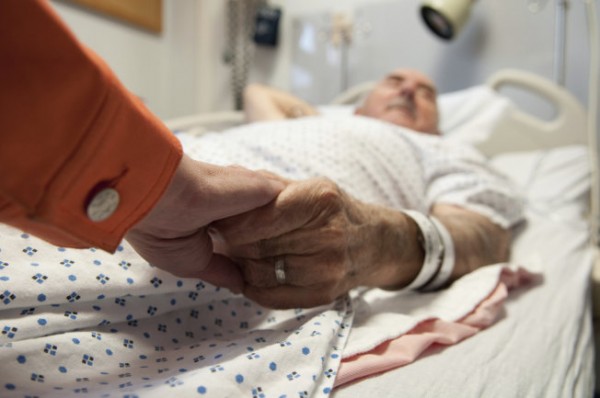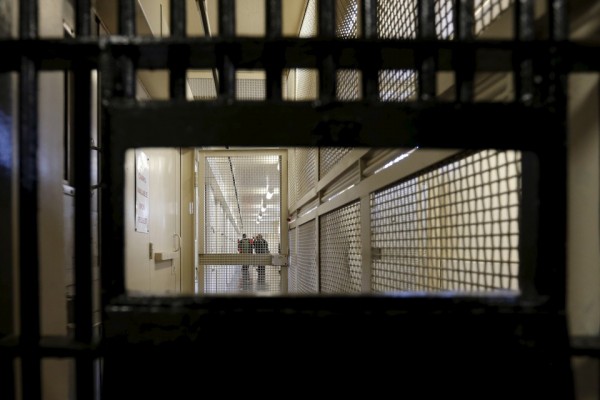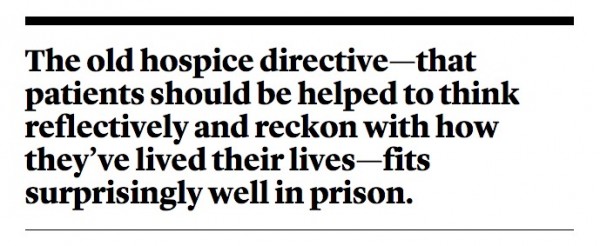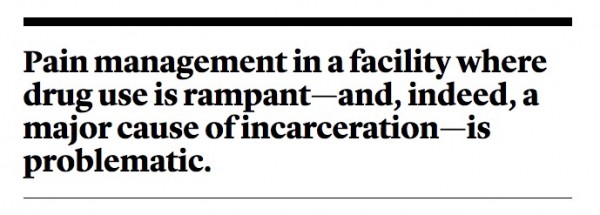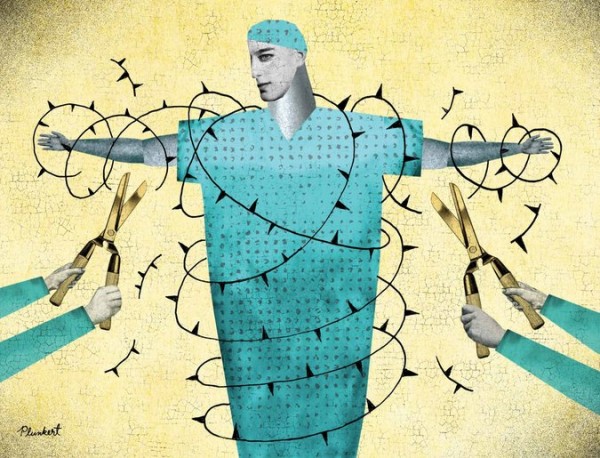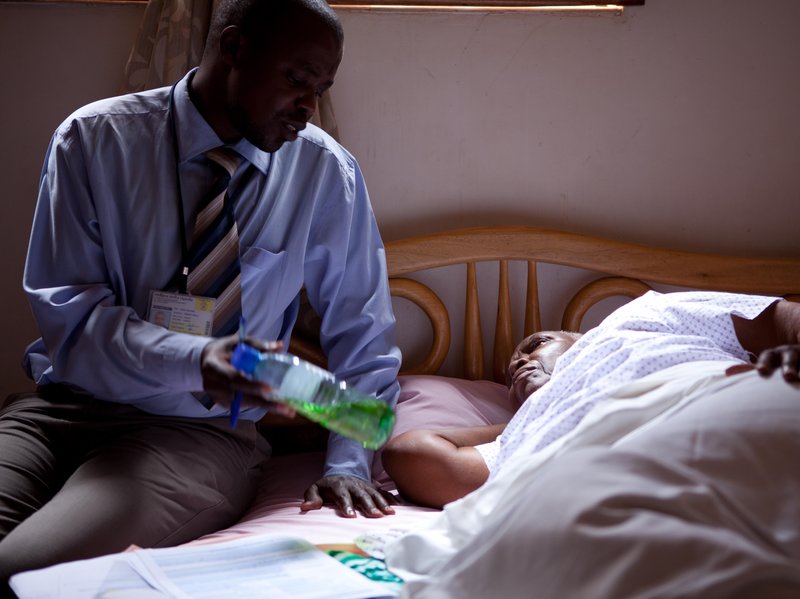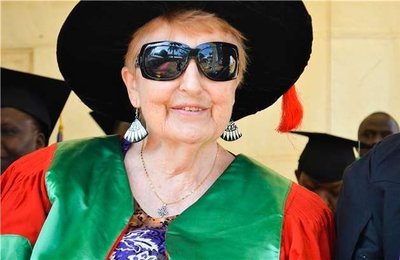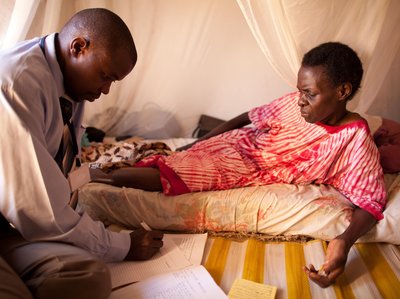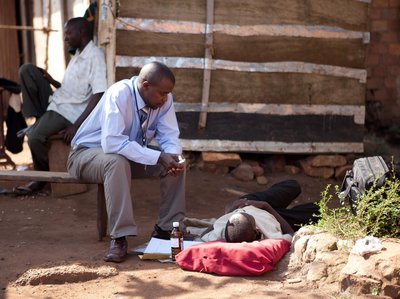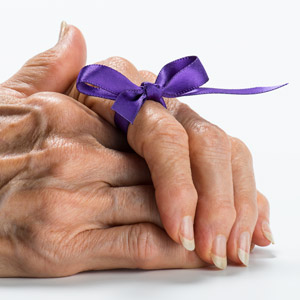by Valery Hazanov
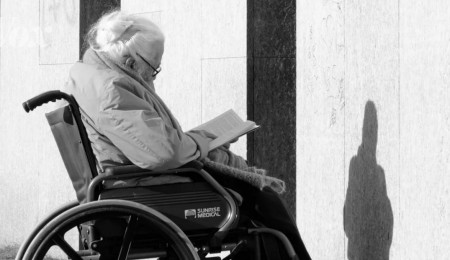
The first thing I noticed when I began working in a nursing home was the smell. It’s everywhere. A mix of detergent and hospital smell and, well, people in nursing homes wear diapers. It’s one of those smells that takes over everything — if you’re not used to it, it’s hard to think about anything else.
Being in the nursing home is tough. People weep and smell and drool. Sometimes you can go on the floor and hear a woman in her 90s scream, “I want Mommy.”
But it’s also ordinary — just people living together: gossiping, daydreaming, reading, watching TV, scratching their back when it itches.
People at the nursing home like to watch TV. It’s always on. How strange, then, that there are no old people on TV.
For the past eight months I have been working as a psychotherapist with dying patients in nursing homes in New York City. It’s an unusual job for a psychotherapist — and the first one I took after graduating with a PhD in clinical psychology. My colleagues were surprised. “Why not a hospital? Or an outpatient clinic? Do the patients even have a psychiatric diagnosis?”
The short answer is that I wanted to see what death looks and feels like — to learn from it. I hope that I can also help someone feel a little less lonely, a little more (is there a measure to it?) reconciled.
I haven’t gotten used to the smell yet. But I have been thinking a lot about the nursing home and the people who live and die there, and wanted to share what I learned.
1) At the end, only the important things remain
“This is all I have left,” a patient recently told me, pointing to a photograph of himself and his wife.
It made me notice the things people bring to the nursing home. The rooms are usually small, so what people bring is important to them. If they have a family, there will be photos of them (most popular are the photos of grandchildren). There might also be a few cherished books, a get-well-soon card, a painting by a grandchild or a nephew, some clothes, maybe flowers. And that’s about it. The world shrinks in the nursing home, and only a few things remain: things that feel important — like they’re worth fighting for, while we still can.
2) Having a routine is key to happiness
‘m a little lazy. My ideal vacation is doing nothing, maybe on a deserted beach somewhere. I look in terror upon very scheduled, very planned people. Yet I have been noticing that doing nothing rarely fills me with joy, while doing something sometimes does. Hence, the conflict: Should I push myself to do things, or should I go with the flow and do things only when I feel like doing them? Being in a nursing home changed my perspective somewhat: I noticed that all the patients who do well follow a routine. Their routines are different but always involve some structure and internal discipline.
I am working with a 94-year-old woman. She wakes up at 6:30 am every day, makes her bed, goes for a stroll with a walker, eats breakfast, exercises in the “rehabilitation room,” reads, eats lunch, naps, goes for another walk, drinks tea with a friend, eats dinner, and goes to bed. She has a well-defined routine. She pushes herself to do things, some of which are very difficult for her, without asking herself why it is important to do them. And, I think, this is what keeps her alive — her movement, her pushing, is her life.
Observing her, I have been coming to the conclusion that it might be true for all of us. And I often think about her when I am debating whether to go for a run or not, whether to write for a couple more hours or not, whether to finally get up from the couch and clean my apartment or not — she would do it, I know, so maybe I should, too.
3) Old people have the same range of emotions as everyone else
“You are so handsome. Are you married?” is something I hear only in extended-family gatherings and in nursing homes. People flirt with me there all the time. This has nothing to do with their age or health — but rather with whether they are shy. When we see someone who is in his 90s and is all bent and wrinkled and sits in a wheelchair, we might think he doesn’t feel anything except physical pain — especially not any sexual urges. That’s not true.
As long as people live, they feel everything. They feel lust and regret and sadness and joy. And denying that, because of our own discomfort, is one of the worst things we can do to old people.
Patients in nursing home gossip (“Did you know that this nurse is married to the social worker?”), flirt, make jokes, cry, feel helpless, complain of boredom. “What does someone in her 80s talk about?” a colleague asked me. “About the same things,” I replied, “only with more urgency.”
Some people don’t get that, and talk to old people as if they were children. “How are we today, Mr. Goldstein?” I heard someone ask in a high-pitched voice of a former history professor in his 80s, and then without waiting for a response added, “Did we poopie this morning?” Yes, we did poopie this morning. But we also remembered a funny story from last night and thought about death and about our grandchildren and about whether we could sleep with you because your neck looks nice.
4) Old people are invisible in American culture
People at the nursing home like to watch TV. It’s always on. How strange, then, that there are no old people on TV.
Here’s a picture I see every day: It’s the middle of the day and there is a cooking show or a talk show on, and the host is in her 50s, let’s say, but obviously looks much younger, and her guest is in his 30s or 50s and also looks younger, and they talk in this hyper-enthusiastic voice about how “great!” their dish or their new movie is, or how “sad!” the story they just heard was. Watching them is a room full of pensive people in their 80s and 90s who are not quite sure what all the fuss is about. They don’t see themselves there. They don’t belong there.
I live in Brooklyn, and I rarely see old people around. I rarely see them in Manhattan, either. When I entered the nursing home for the first time I remember thinking that it feels like a prison or a psychiatric institution: full of people who are outside of society, rarely seen on the street. In other cultures, old people are esteemed and valued, and you see them around. In this manic, death-denying culture we live in, there seems to be little place for a melancholic outlook from someone that doesn’t look “young!” and “great!” but might know something about life that we don’t.
There isn’t one Big Truth about life that the patients in the nursing home told me that I can report back; it’s a certain perspective, a combination of all the small things. Things like this, which a patient in her 80s told me while we were looking outside: “Valery, one day you will be my age, God willing, and you will sit here, where I sit now, and you will look out of the window, as I do now. And you want to do that without regret and envy; you want to just look out at the world outside and be okay with not being a part of it anymore.”
5) The only distraction from pain is spiritual
Some people in the nursing home talk about their physical pain all the time; others don’t. They talk about other things instead, and it’s rarely a sign of whether they are in pain or not.
Here’s my theory: If for most of your life you are concerned with the mundane (which, think about it, always involves personal comfort) then when you get old and feel a lot of pain, that’s going to be the only thing you’re going to think about. It’s like a muscle — you developed the mundane muscle and not the other one.
The saddest people I see in the nursing home are childless
And you can’t start developing the spiritual muscle when you’re old. If you didn’t reallycare about anything outside of yourself (like books, or sports, or your brother, or what is a moral life), you’re not going to start when you’re old and in terrible pain. Your terrible pain will be the only thing on your mind.
But if you have developed the spiritual muscle — not me, not my immediate comfort — you’ll be fine; it will work. I have a couple of patients in their 90s who really care about baseball — they worried whether the Mets were going to make the playoffs this year, so they rarely talked about anything else; or a patient who is concerned about the future of the Jewish diaspora and talks about it most of our sessions; or a patient who was worried that not going to a Thanksgiving dinner because of her anxieties about her “inappropriately old” appearance was actually a selfish act that was not fair to her sister. Concerns like these make physical pain more bearable, maybe because they make it less important.
6) If you don’t have kids, getting old is tough
The decision to have kids is personal, and consists of so many factors: financial, medical, moral, and so on. There are no rights or wrongs here, obviously. But when we are really old and drooling and wearing a diaper, and it’s physically unpleasant to look at our wounds or to smell us, the only people who might be there consistently, when we need them, are going to be either paid to do so (which is okay but not ideal) or our children. A dedicated nephew might come from time to time. An old friend will visit.
But chances are that our siblings will be very old by then, and our parents will be dead, which leaves only children to be there when we need it. Think about it when you are considering whether to have children. The saddest people I see in the nursing home are childless.
7) Think about how you want to die
José Arcadio Buendía in One Hundred Years of Solitude dies under a tree in his own backyard. That’s a pretty great death.
People die in different ways in the nursing home. Some with regrets; others in peace. Some cling to the last drops of life; others give way. Some planned their deaths and prepared for them — making their deaths meaningful, not random. A woman in her 90s recently told me, “Trees die standing tall.” This is how she wants to go: standing, not crawling.
I think of death as a tour guide to my life — “Look here; pay attention to this!” the guide tells me. Maybe not the most cheerful one, slightly overweight and irritated, but certainly one who knows a lot and can point to the important things while avoiding the popular, touristy stuff. He can tell me that if I want to die under a tree in my backyard, for example, it might make sense to live in a house with a backyard and a tree. To you, he will say that if you don’t want any extra procedures done to you at the end, it might make sense to talk about it with the people who will eventually make this decision. That if you want to die while hang-gliding over an ocean, then, who knows, maybe that’s also possible.
I think of death as a tour guide to my life — “Look here; pay attention to this!”
My father, who has spent the past 30 years working in an ICU as a cardiologist and has seen many deaths, once told me that if he had to choose, he would choose dying well over living well — the misery of a terrible, regretful death feels worse to him than a misery of a terrible life, but a peaceful death feels like the ultimate reward. I think I am beginning to see his point.
I am 33. Sometimes it feels like a lot — close to the end; sometimes, it doesn’t. Depends on the day, I guess. And like all of us, including the people in the nursing home, I am figuring things out, trying to do my best with the time I have. To not waste it.
Recently, I had a session with a woman in her 90s who has not been feeling well.
“It’s going in a very clear direction,” she told me. “Toward the end.”
“It’s true for all of us,” I replied.
“No, sweetheart. There is a big difference: You have much more time.”
Complete Article HERE!


